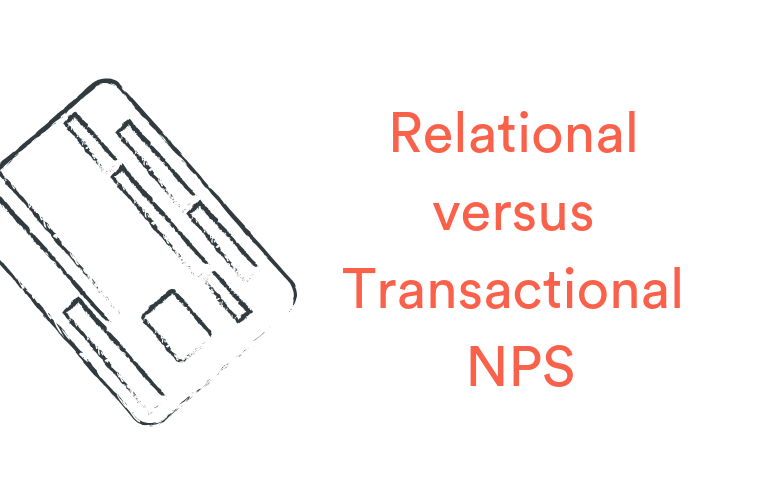Relational vs. Transactional NPS
The relational approach involves surveying customers to gauge their overall perception of the organization in general and is intended to show overall satisfaction and loyalty. Relational NPS engages the customer independent of a transaction experience. This provides a deeper understanding of the customer’s overall sentiment towards the brand and encompasses all of their combined product experiences.
Transactional Net Promoter Score is designed to instead measure a customer’s satisfaction after a specific event or at a specific stage of engagement. Examples include, immediately after product order, after product delivery/installation or after a customer service interaction. The transactional survey is focused only on that specific event and the customer’s NPS rating at the time of the event. Like relational NPS, transactional NPS should also be measured on an on-going basis.
When to use Relational and Transaction NPS
With relational NPS, the primary goal is to understand the overall perception of the company and customer loyalty. Relational NPS is also useful for benchmarking against competitive NPS scores and for targeting low and non-purchasing or non-returning customers. You should measure relational NPS continuously for a more accurate reading of the overall brand health.
Transactional NPS is better suited for identifying specific strengths and weaknesses of individual customer interactions which, when improved, will improve the overall relational NPS since improving the individual customer interactions are key to improving the overall customer experience.
Survey Design Considerations
At a minimum, a standard relational NPS question asks how likely the customer is to recommend the product or service on a scale of 0 to 10, with wording such as: “How likely are you to recommend [your product] to your friends and family?” You should then include an open-ended question as a follow-up so that the customer can provide reasons for the score they gave.
The NPS question in a transactional survey should be modified to include some sort of reference to the specific event which triggered the NPS survey offer: “After completing the ordering process, how likely are you to recommend [your product] to your friends and family?”
Relational surveys are sent at the same time to all potential respondents independent of any specific customer interaction. Transactional surveys can be sent out to customers at any interval following the specific interaction (immediately, the next day, etc.). Surveys can be distributed to potential respondents using a variety of survey methodologies including email, text, website pop-ups, etc.

